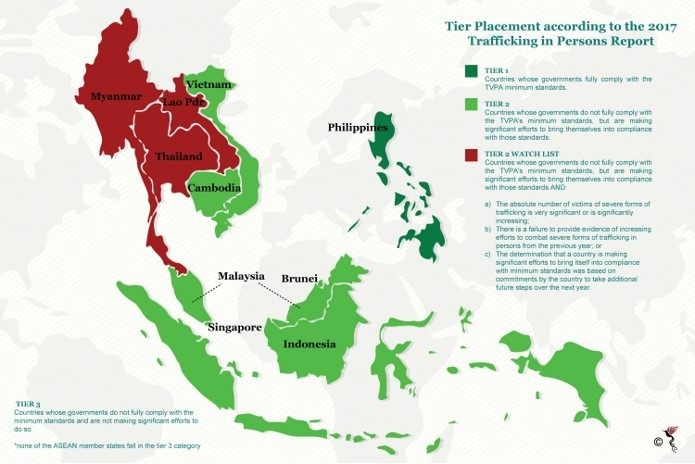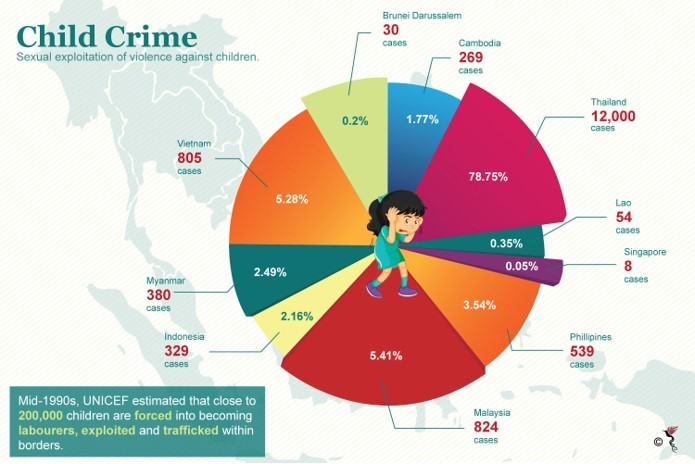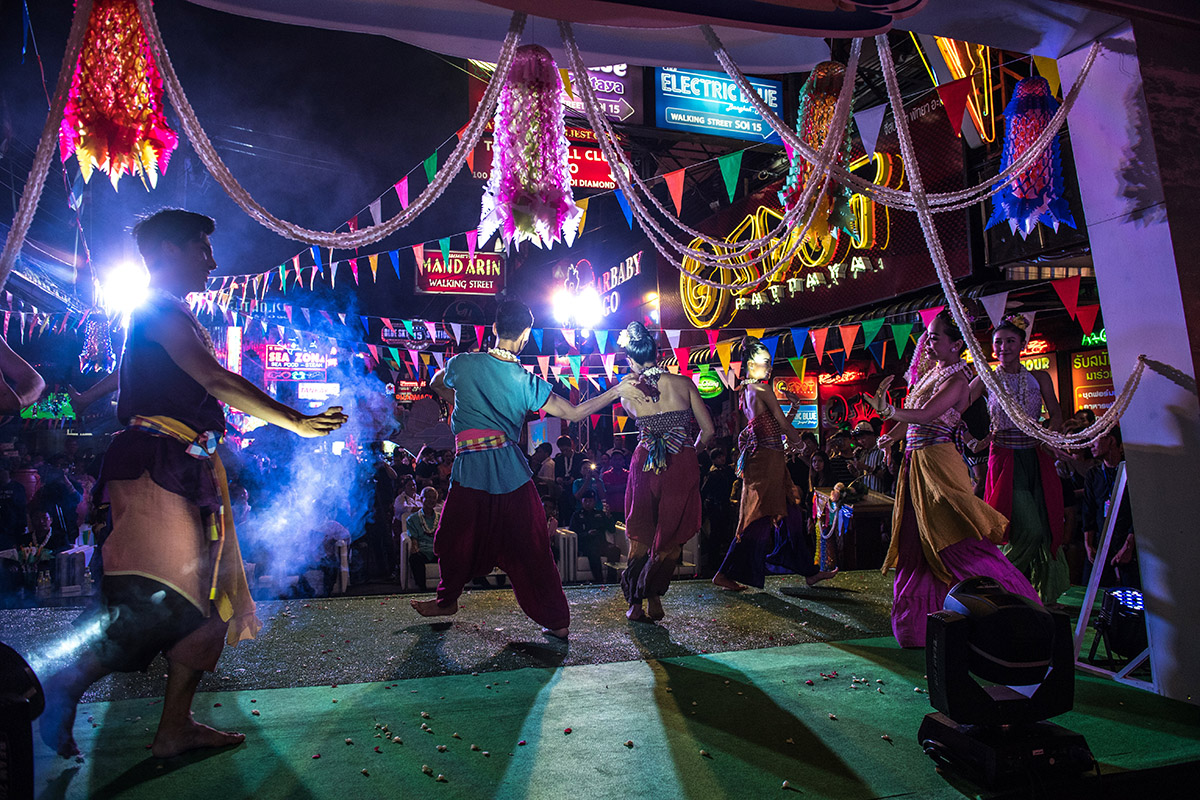“I've seen video content of a child that's the same age as mine being raped by an American man that was a sex tourist in Cambodia”, remarked former model and American actor, Ashton Kutcher, before the United States Senate Foreign Relations Committee on ending modern slavery and human trafficking in February this year.
He paused. His beady eyes filled with despair before he continued.
“And this child was so conditioned by her environment that she thought she was engaging in play”, he said shakily, his lower lip unmistakably quivering as he conveyed the horrors of what he had witnessed.
Kutcher is a proud father of two – a two-year-old and a two-month-old. He is also the founder and chairman of Thorn, a company which builds software to combat human trafficking and the sexual exploitation in children.
In reality, child sex tourism is a multi-billion-dollar industry spanning the planet and it victimises almost two million children each year. The UN (United Nations) estimates that the industry could be worth well over 20 billion dollars per annum and a huge hotbed for this activity is Southeast Asia.
It is hard to fathom that anyone would volunteer to work in the child sex tourism, but many are forced into that trade from human trafficking activities. Statistics by the ILO (International Labour Organisation) show that 43 percent of all trafficked victims are forced into sex work and of that number, close to 98 percent are women and girls.
According to the 2017 Trafficking in Persons Report published by the US State Department, Cambodia, Thailand and Lao are seeing an increasing number of cases in human trafficking. Although the report also highlights that measures are taken by the governments of these countries to combat the rise, they are deemed to be inadequate. A 2016 United Nations Office on Drugs and Crime report estimated that within the East Asia and Pacific region, 22 percent of victims are trafficked domestically while 69 percent of them are trafficked within the region. Of that percentage, close to 7,800 or more than 60 percent of the victims were targeted for sexual exploitation.

Tier Placement of ASEAN countries in compliance with the TVPA (Trafficking Victims Protection Act)
In recent years, Cambodia has been a magnet for this insidious activity and estimates suggest that in 2002, close to 6,000 children were involved. Although that figure has dropped since, a new worrying trend has emerged within the industry. In 2014, virgin girls were the most sought-after commodity within the business. Young girls are sometimes trafficked in from Vietnam to be sold for their virginity.
The demand for such sexual services is fuelled mostly by foreigners who take advantage of the conditions of poverty and hardship faced by the families of individuals who see no way out except to sell themselves or their children to make ends meet. According to the Bangkok based ECPAT International (End Child Prostitution in Asian Tourism) report, most of these sexual offenders come from wealthier places like the US, Australia, Europe and other East Asian countries. A comprehensive review of 288 cases of child sexual offenders by a Cambodian NGO (non-government organisation), APLE (Action Pour Les Enfants) revealed that American, French and British citizens made up 38 percent of those whom were detained in Cambodia for crimes related to child sex.
Thailand has been infamous for its sex tourism in many of its famous tourist destinations like Bangkok, Pattaya and Songkhla. Perpetrators are now seeking to meet the demand for more youthful looking females and males which is creating a market for children within the industry.
The Philippines has also seen an increase of this illicit activity. In 2014, 33 percent of the 180 child sex cases handled by the Philippine Department of Social Welfare and Development involved children under the age of 14. According to authorities, many more cases go unreported.
In Malaysia, estimates show that almost 150 children, mostly trafficked from Indonesian and Thailand are forced into the sex industry each year.

Data on child sexual abuse cases in ASEAN countries.
Further south in the island of Batam in Indonesia, data from ECPAT International revealed that 30 percent of those involved in the sex industry there were children. The same report revealed that more than 3,000 tourists from neighbouring Malaysia and Singapore visit the island every week to indulge in such heinous sexual services.
The solution to the issue at hand lies at the regional and domestic levels due to the transnational nature of the crime. Recently, the ACTIP (ASEAN Convention Against Trafficking in Persons, Especially Women and Children) was ratified by the leaders of all member states and has come into force in March 2017. According to the ASEAN Secretariat website, the convention addresses “the need for common standards and approaches in relation to the way in which trafficking in persons is criminalised, investigated and prosecuted as well as the treatment of identified trafficked victims”. It is still too early to see if the convention has amounted to a palpable reduction in the number of human trafficking cases.
At a domestic level, the solution must come from both the demand and supply sides of the equation. On one hand, countries like Australia, the US and EU (European Union) have extra-judicial legislation which prosecute their citizens for their engagement in child sexual services in foreign countries. On the other, progress in nations supplying to these activities is considerably slow but there is hope. Cambodia which previously did not have explicit laws banning child sex tourism, is now working with the UNODC to enhance their legal framework to combat the crime. Authorities in Thailand and the Philippines are working more closely with NGOs to halt the trafficking of children for sexual purposes. Nevertheless, there is always the threat of corruption which may stifle progress.
Kutcher, began his opening statement to the US Senate Foreign Relations Committee by mentioning that he was here to “to defend the right to pursue happiness”. A right that is still being robbed away from children who have been thrown into this exploitative industry. A right that is a collective burden by state, society and individual to defend, so that we may one day see an end to this monstrosity.
